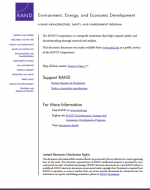Differences in poverty rate in the neighborhood where kids grow up make a bigger difference to their economic future than differences in parents income.* Children who grow up in neighborhoods of concentrated poverty face lifelong health challenges, increased odds of incarceration and reduced lifetime earnings.* By contrast when lower-income families live in economically mixed communities, their children have essentially the same health and economic outcomes as children from higher income families.*
Lower-income families are not the only ones who suffer under economic segregation—everyone loses when economic diversity deteriorates. Unequal access to housing drives sprawling development patterns, worsens traffic congestion, pollutes air quality, increases taxpayer dollars spent on basic infrastructure, and decreases racial, cultural, and economic diversity.
While we have understood the negative consequences of economic segregation for decades, recent research has shown just how hard it is to achieve economic integration through traditional affordable housing strategies. A 2012 study found that the vast majority of subsidized affordable housing has been located in neighborhoods with poor performing schools.*
School Performance & Affordable Housing
| Housing Program | Median quality of nearest school |
| Public Housing | 19th Percentile |
| Low Income Housing tax Credits | 30th Percentile
|
| Housing Choice Vouchers | 26th Percentile
|
| Inclusionary Housing | 40th to 60th Percentile |




